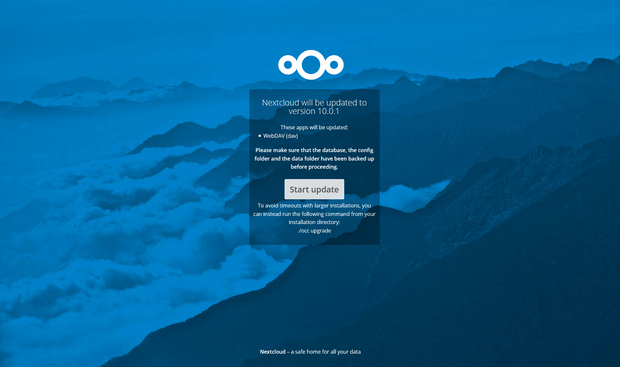 Er zijn updates voor versies 9 en 10 van Nextcloud beschikbaar gekomen. Met dit programma is het mogelijk is om in eigen beheer cloudopslag te draaien. Nextcloud is ontstaan nadat een groot aantal ontwikkelaars bij ownCloud zijn weggelopen en opnieuw zijn begonnen. Alle onderdelen, inclusief de enterprise-functionaliteit, worden als opensource aangeboden en het verdienmodel is gelijk aan wat Red Hat doet, namelijk het leveren van betaalde ondersteuning voor grote klanten. Nextcloud belooft verder een zogenaamde drop-in replacement, die het mogelijk maakt om eenvoudig van ownCloud naar Nextcloud over te stappen.
Er zijn updates voor versies 9 en 10 van Nextcloud beschikbaar gekomen. Met dit programma is het mogelijk is om in eigen beheer cloudopslag te draaien. Nextcloud is ontstaan nadat een groot aantal ontwikkelaars bij ownCloud zijn weggelopen en opnieuw zijn begonnen. Alle onderdelen, inclusief de enterprise-functionaliteit, worden als opensource aangeboden en het verdienmodel is gelijk aan wat Red Hat doet, namelijk het leveren van betaalde ondersteuning voor grote klanten. Nextcloud belooft verder een zogenaamde drop-in replacement, die het mogelijk maakt om eenvoudig van ownCloud naar Nextcloud over te stappen.
In versie 10 wordt onder meer een Server Information-app geïntroduceerd die de status en prestaties in de gaten houden. Verder is de beveiliging aangescherpt en is er bijvoorbeeld tweetrapsauthenticatie mogelijk, en zijn er verbeteringen aan de gebruikersinterface aangebracht. De changelog voor versie 9.0.54 is op deze pagina te vinden, die voor versie 10.0.1 staat hier en de aankondiging ziet er als volgt uit:
New Nextcloud maintenance releases out with improved updater and over 40 fixes
Today we’ve released the first update to Nextcloud 10 and a 3rd update to Nextcloud 9. These releases bring a large number of improvements, most notably an improved updater. We strongly recommend upgrading. Read on for a taste of what is new.
Improvements
The new updates add some minor functionality to Nextcloud 9, allowing user quota retrieval via the provisioning API and supporting the files drop capability for clients. Clients will also be able to retrieve theming information so they can adjust colors or icons as well and the theming tool will modify the browser page titles to match the setting by the Admin. The Nextcloud installation process will warn users that Nextcloud 9 does not support PHP 7.1 and will refuse to continue the installation.
Nextcloud 10 received most of the same enhancements as 9, adding the ability for admins to specify the configuration directory in an environment variable and applying the password policy upon user creation. Besides the introduction of these enhancements over 40 bugs were squashed in both 9 and 10.
Improved Updater
With 10.0.1 and 9.0.54 we include a more reliable updater which has been in testing for several weeks. We had disabled the update notifications in current versions due to issues with the updater. We decided to spend time on additional testing and improvements to make sure no admin would be left with a broken instance. The new updater replaces the files of the existing installation with those of the new release, doing extensive checks in between to ensure the platform, permissions and other requirements are all as they need to be. Once the upgrade of the files is done, the normal update process can be started from either the command line or the browser. To upgrade to 10.0.1 and 9.0.54 you still need to do this manually via our tarballs. For future updates (from 9.0.54/10.0.1 to a release afterwards) instances can more easily be updated via the new web based updater which shows up in the admin settings once there is an update available. In the upcoming releases we also plan to bring this feature back to the command line tool.
If you’re eager to test the new updater with an old version of Nextcloud you can find the steps in the forums, but they should only be used by experienced users. Only updating the URL in config.php to the new server (via updater.server.url) is strongly discouraged because then the old updater will break your setup.


:fill(white):strip_exif()/i/2001374971.jpeg?f=thumbmedium)